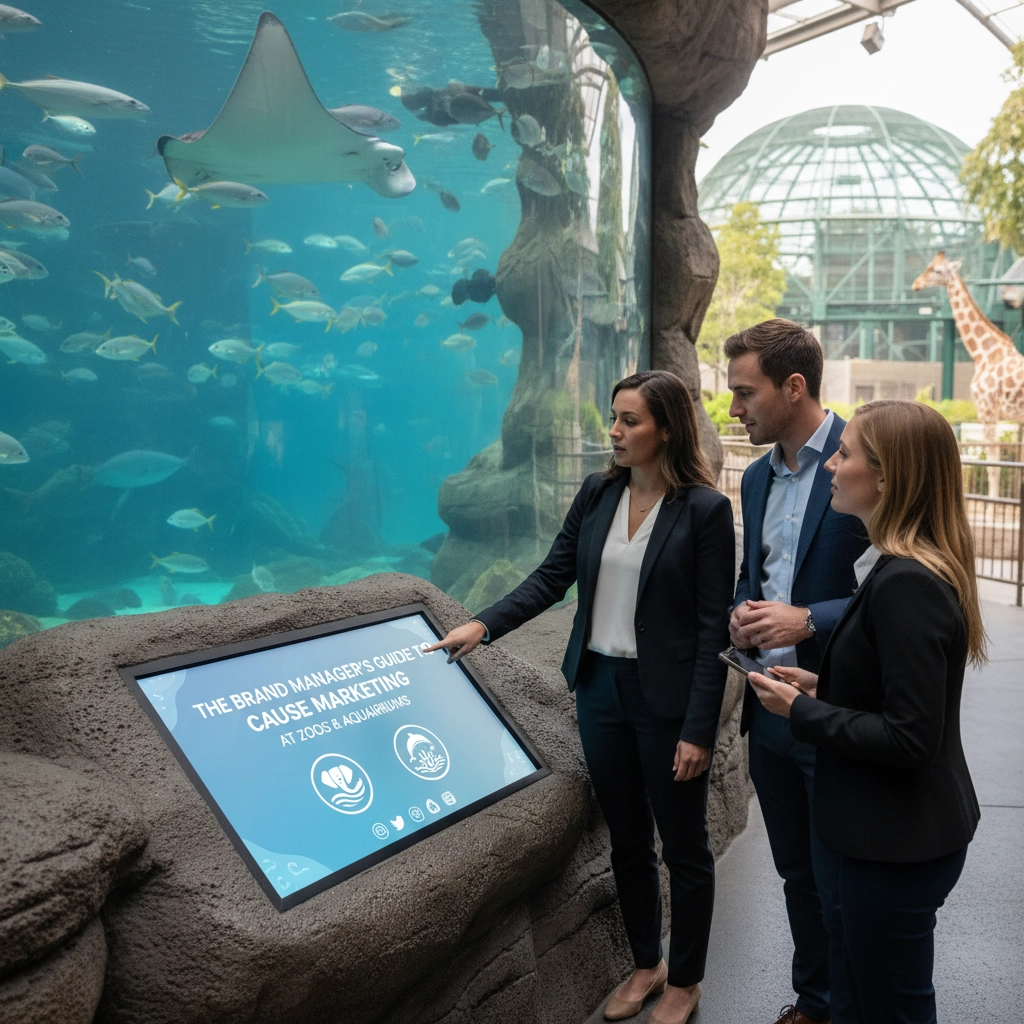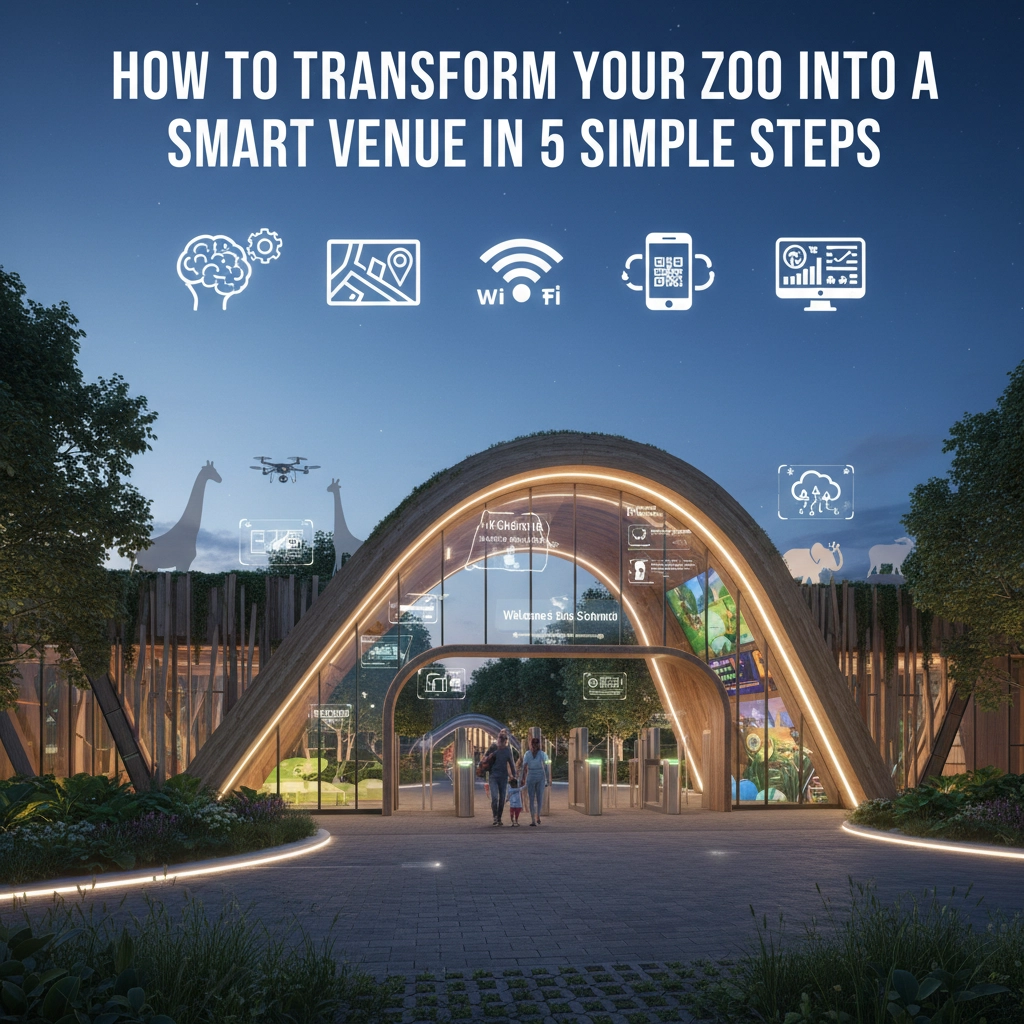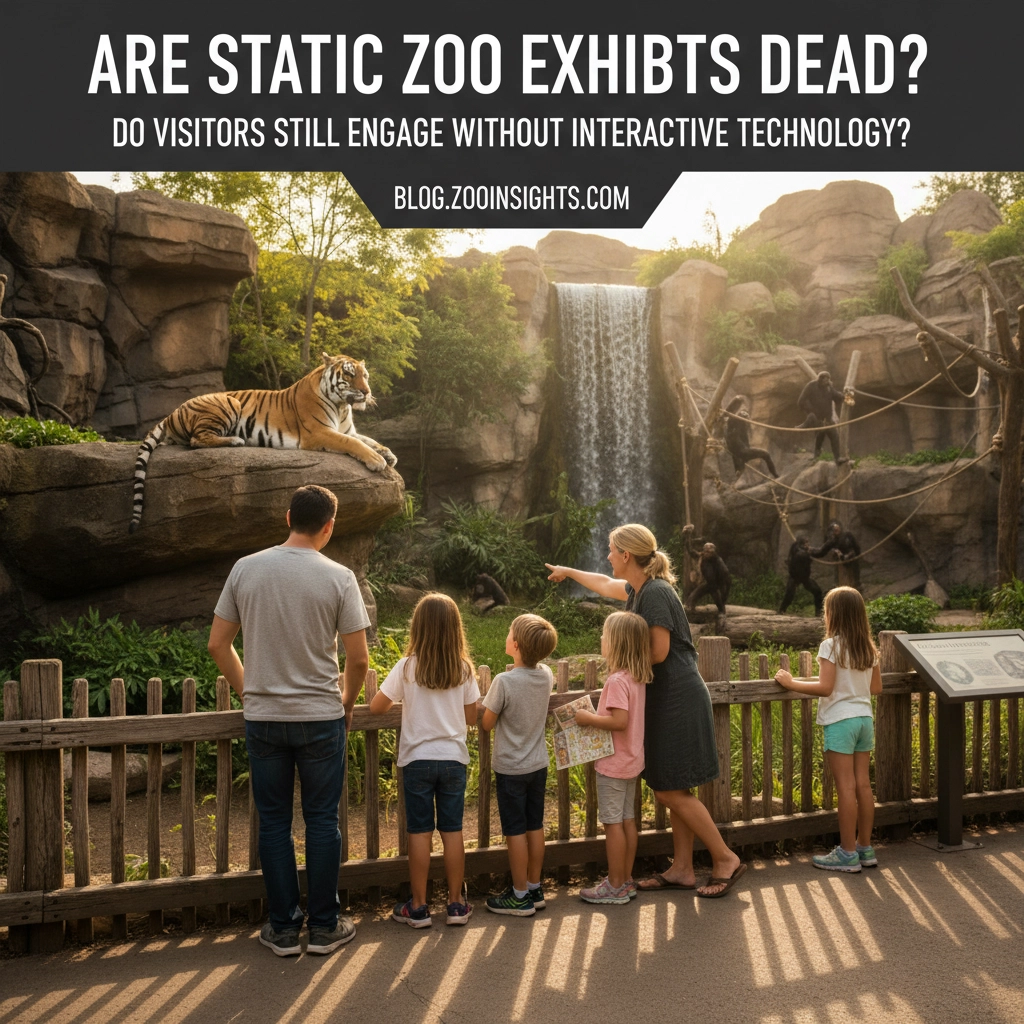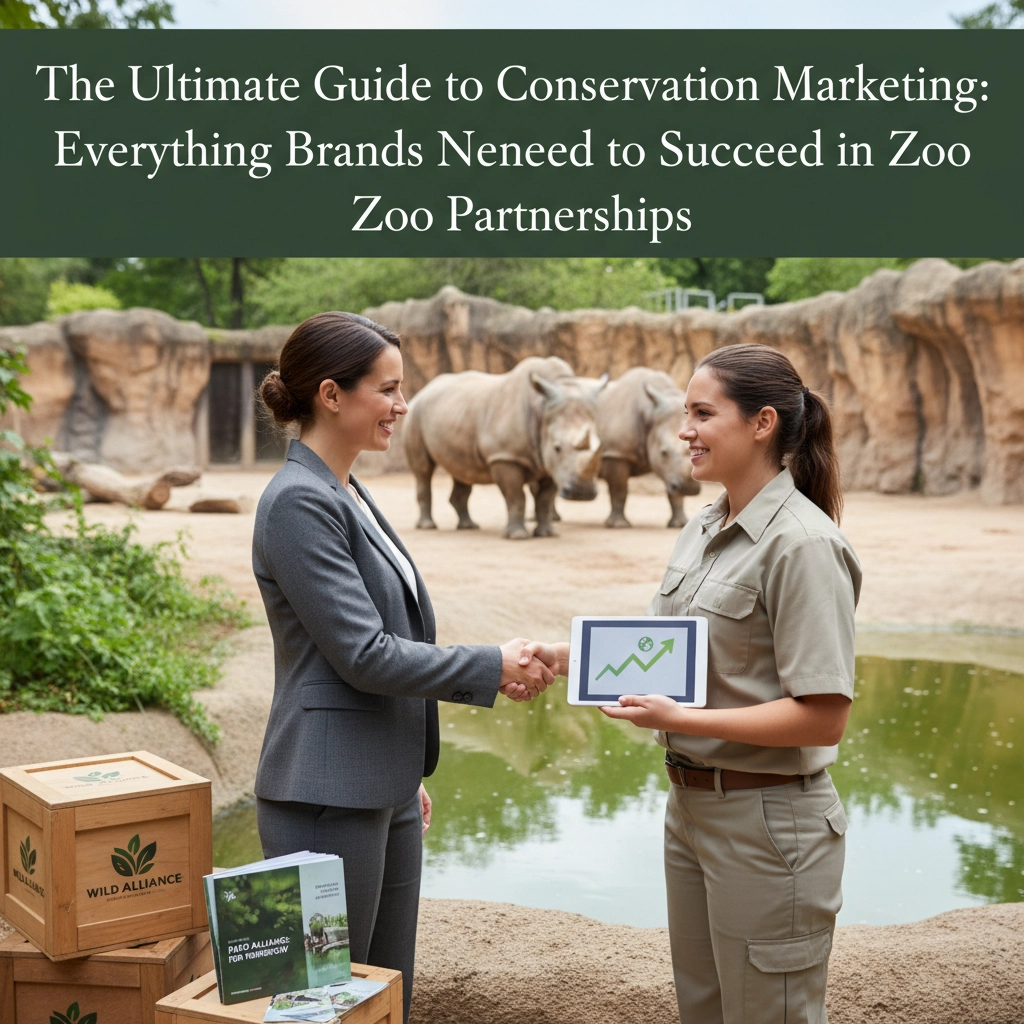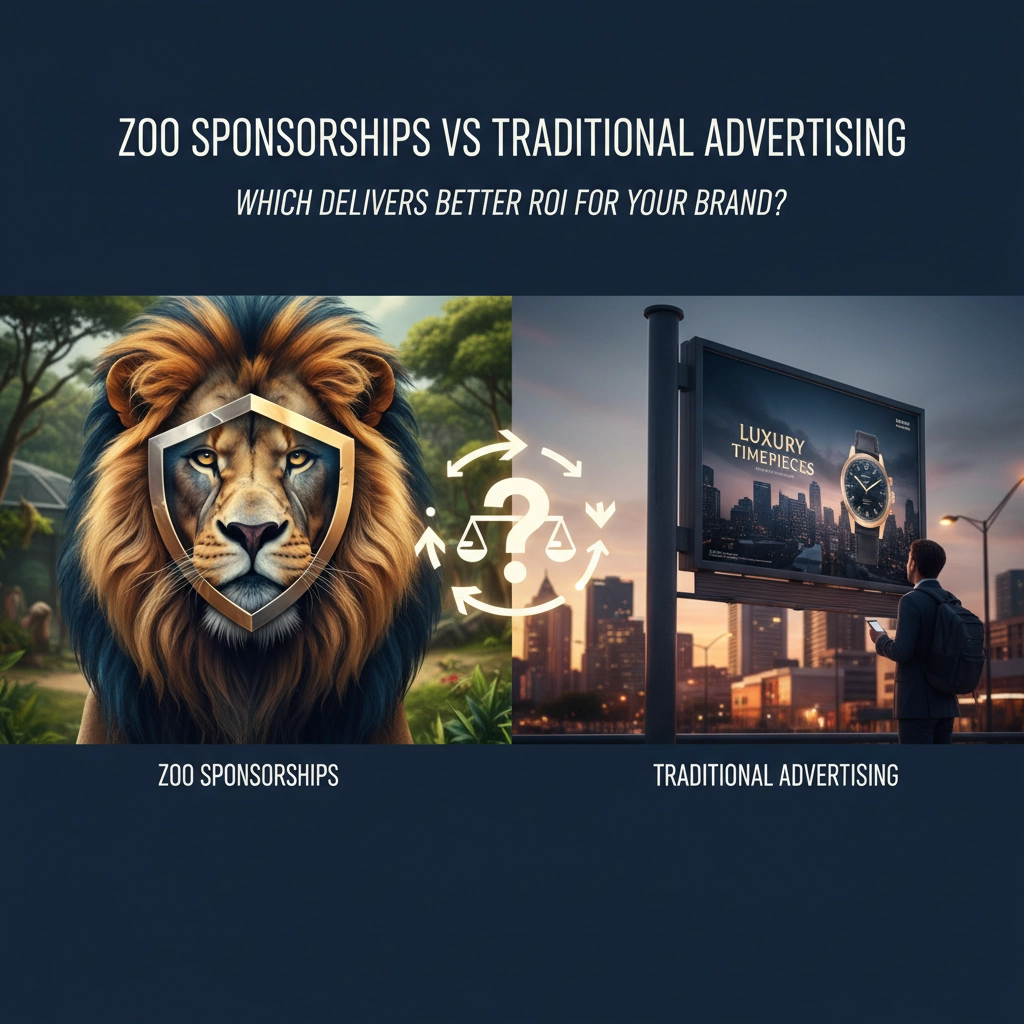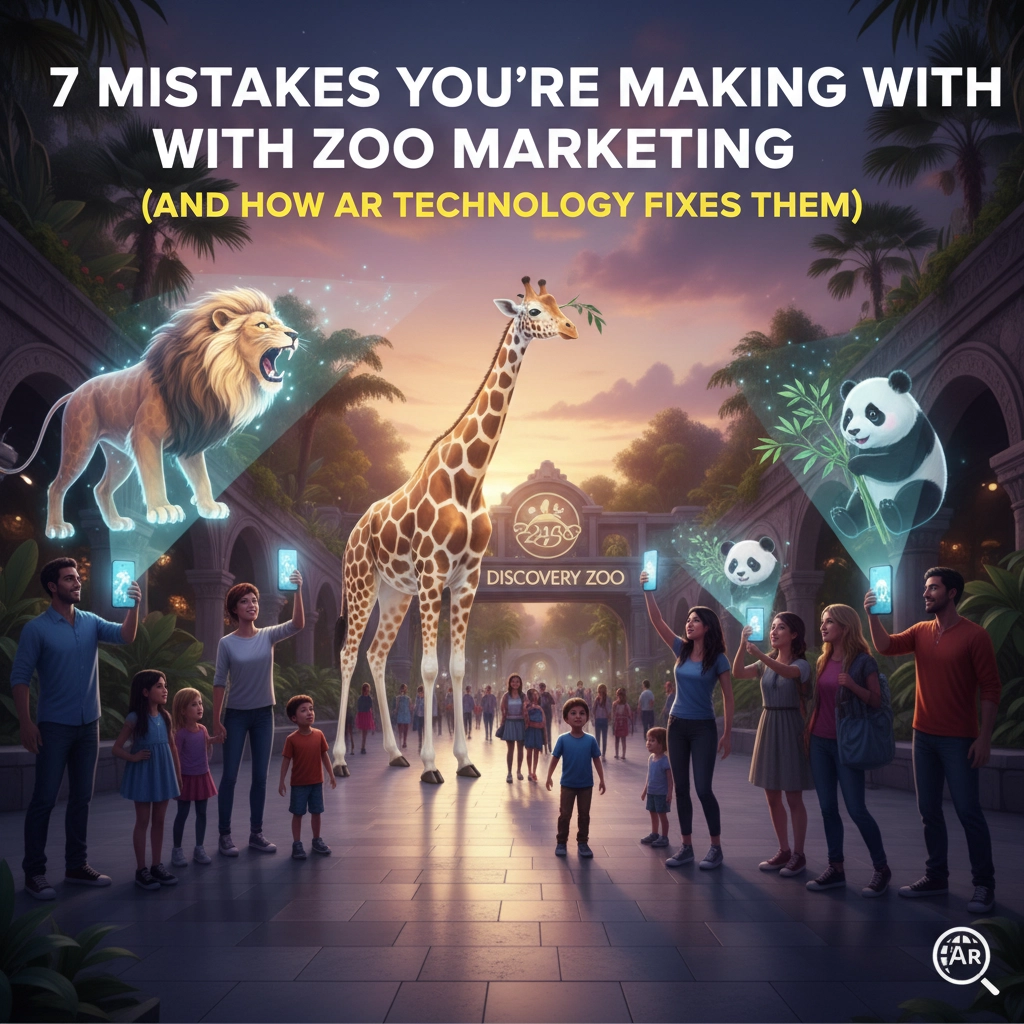Cause marketing at zoos and aquariums isn't just trendy: it's one of the smartest moves a brand manager can make in 2025. With over 195 million annual visitors across 200+ accredited facilities in the US, these venues offer something digital advertising simply can't: authentic, emotionally-charged environments where families spend 3-4 uninterrupted hours together.
But here's the kicker: most brands are still sleeping on this opportunity.
Why Zoos and Aquariums Are Marketing Gold Mines
The numbers tell an incredible story. Zoos and aquariums reach more people annually than all four major sports leagues combined. We're talking about venues distributed across 48 of the top 50 media markets, creating comprehensive geographic coverage that would cost millions in traditional advertising.

The demographic sweet spot is undeniable:
- Highest concentration of parents with children aged 2-12
- Extended engagement periods (average 3-4 hours per visit)
- Visitors are "in the moment" and distraction-free
- Family-focused environment primes emotional connections
Unlike scrolling through social feeds or channel surfing, zoo visitors are actively engaged, creating what we call "pure white space" for brand messaging: an uncluttered environment where your message actually gets heard.
The Conservation Mission: Your Secret Weapon
Here's where cause marketing at zoos gets really powerful. Modern zoos contribute over $1 billion every five years to conservation efforts and have literally saved species from extinction. When 90% of consumers feel better about brands supporting environmental causes, this isn't just good PR: it's good business.
The shift from entertainment-focused to conservation-driven messaging gives brands authentic platforms for meaningful partnerships. You're not just sponsoring a fun day out; you're supporting real conservation efforts that visitors can see, touch, and experience.
Key conservation angles that resonate:
- Wildlife protection and rehabilitation programs
- Educational initiatives for children and families
- Sustainable practices and environmental stewardship
- Community outreach and conservation awareness
Understanding Your Audience: Families in "Flow State"
Zoo visitors aren't just killing time: they're creating memories. Research shows families visit primarily to spend uninterrupted time together (by a 3-to-1 margin over other motivations). This creates what psychologists call a "flow state": heightened emotional engagement perfect for brand messaging.
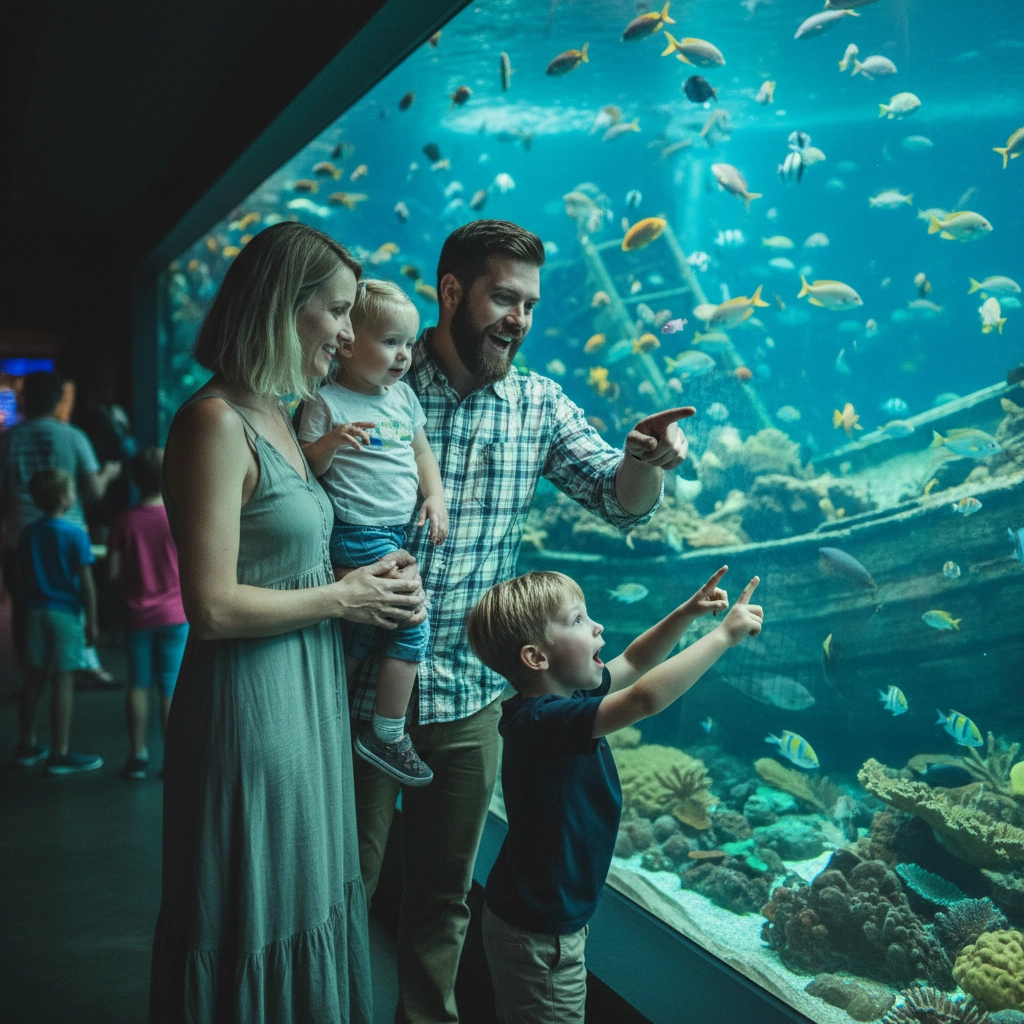
Parents experience awe, wonder, and nostalgia while kids explore and learn. This emotional cocktail makes visitors more receptive to brand messages, especially when those messages align with the conservation and educational mission they're already buying into.
The beauty is in the longevity of these impressions. Unlike a 30-second ad or banner click, zoo experiences create lasting memories that your brand can become part of.
Strategic Partnership Approaches That Actually Work
Successful zoo cause marketing isn't about slapping your logo on a penguin exhibit (though that can work too). It's about creating integrated experiences that serve your marketing goals while genuinely supporting the institution's mission.
Sponsorship Tiers That Make Sense:
Habitat Sponsorships: Brand a specific animal habitat or exhibit area. Perfect for companies wanting long-term visibility with clear conservation messaging.
Educational Program Support: Fund school visits, summer camps, or adult education programs. Ideal for brands targeting parents and educators.
Conservation Initiative Partnerships: Support specific research or rehabilitation programs. Great for companies wanting authentic sustainability stories.
Special Event Sponsorships: Partner on galas, member events, or seasonal celebrations. Perfect for B2B relationship building and community engagement.
Creating Urgency in an "Evergreen" Environment
One challenge with zoo marketing is that visitors often see these as "always there" destinations. Unlike museums with rotating exhibits, zoos can feel static. Smart brand managers overcome this by highlighting:
- New animal arrivals or births
- Seasonal exhibits and programming
- Conservation milestones and achievements
- Limited-time experiences or events
The Audubon Nature Institute's "The Roar Returns" campaign perfectly demonstrates this approach, generating $10 million in publicity value by creating urgency around post-pandemic reopening while partnering with conservation organizations.
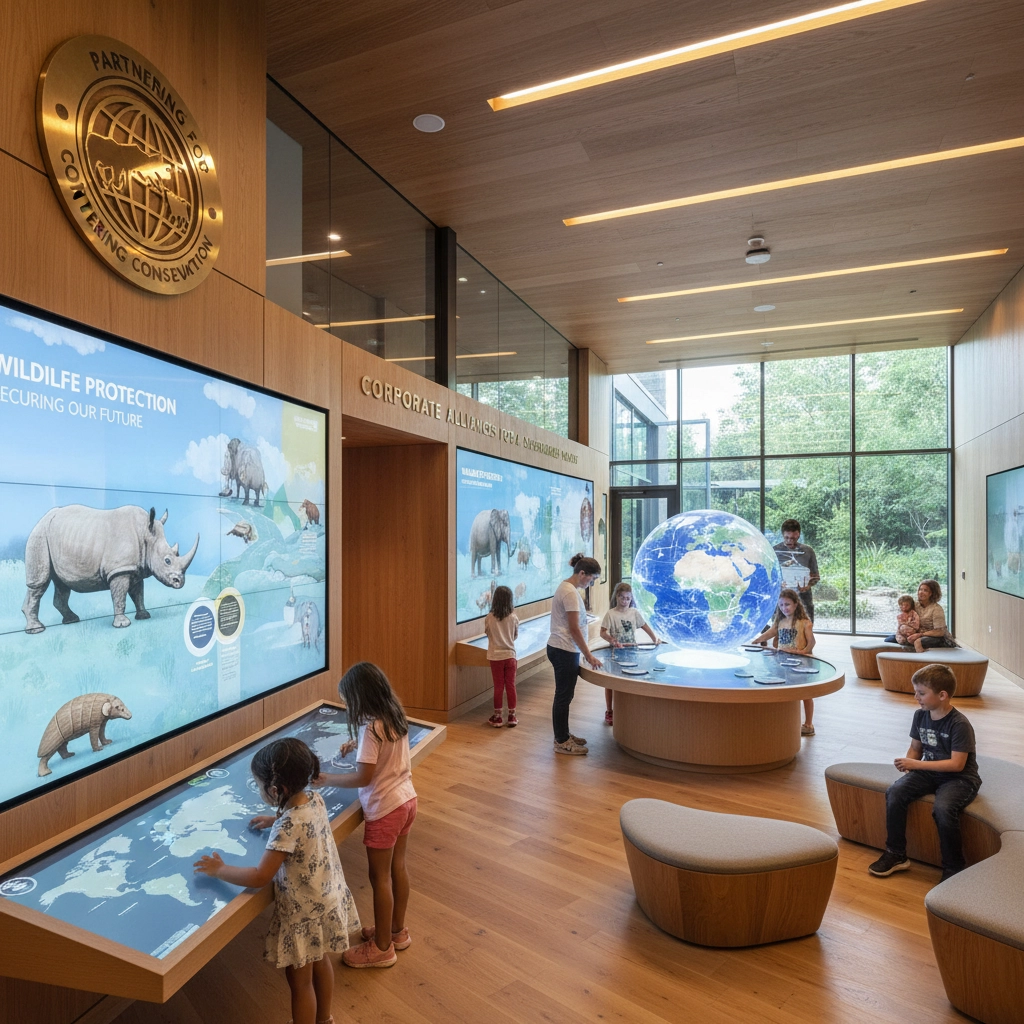
Measuring Success: Beyond Visitor Counts
Traditional metrics like impressions and reach still matter, but zoo partnerships offer deeper measurement opportunities:
Engagement Metrics:
- Average time spent at branded exhibits
- Interactive experience participation rates
- Educational program attendance
- Social media engagement and sharing
Brand Lift Indicators:
- Pre/post visit brand awareness surveys
- Conservation message recall testing
- Purchase intent changes
- Brand perception improvements
Conservation Impact Measures:
- Funds raised for specific conservation programs
- Species protection milestones achieved
- Educational reach and impact
- Community engagement growth
Implementation Best Practices
Start with Mission Alignment: Your brand values should genuinely connect with conservation, education, or family wellness. Forced partnerships feel inauthentic and backfire.
Think Multi-Channel: Maximize your investment by extending partnerships across digital campaigns, social media, PR, events, and retail promotions.
Plan for Storytelling: Document the partnership journey, conservation impact, and visitor experiences. These stories become powerful marketing assets.
Engage Employees: Zoo partnerships offer unique team-building and corporate social responsibility opportunities that boost internal brand engagement.
Risk Mitigation and Brand Safety
Zoos and aquariums offer inherent brand safety advantages. These trusted community institutions provide:
- Family-friendly, positive association environments
- Educational context that enhances brand credibility
- Community respect and established goodwill
- Flexible partnership terms that allow campaign adjustments
- Built-in crisis management through institutional reputation

The Competitive Advantage
While your competitors fight for attention in oversaturated digital spaces, zoo partnerships give you exclusive access to engaged family audiences in emotion-rich environments. The uncluttered marketing landscape means higher share of voice and better message retention.
Plus, conservation partnerships create authentic corporate social responsibility stories that resonate across all your marketing channels: from press releases to social media content to employee recruitment materials.
Making It Happen: Next Steps for Brand Managers
Ready to explore zoo partnerships? Start by identifying zoos and aquariums in your key markets. Most have dedicated corporate partnership teams eager to work with brands on meaningful collaborations.
Research potential partners by:
- Analyzing visitor demographics and geographic coverage
- Understanding their conservation priorities and programs
- Evaluating partnership tiers and pricing options
- Assessing alignment with your brand values and target audience
The most successful partnerships start small with pilot programs that demonstrate value before expanding into larger, multi-year commitments.
Zoo cause marketing isn't just about doing good: it's about smart marketing that builds authentic connections with family audiences while supporting meaningful conservation efforts. In an increasingly purpose-driven marketplace, these partnerships offer the perfect blend of effectiveness, authenticity, and impact.
Ready to explore innovative marketing partnerships? Connect with our team at Zoo Media for expert guidance on cause marketing strategies that drive real results.
Dan Kost, CEO | AI Receptionist: +1 (323) 676-0621 | www.dakdan.com
#Motivation #Branding #Strategy #Marketing #AdvertisingAndMarketing #digitalmarketing #Innovation #CauseMarketing #ZooMarketing #ConservationMarketing

